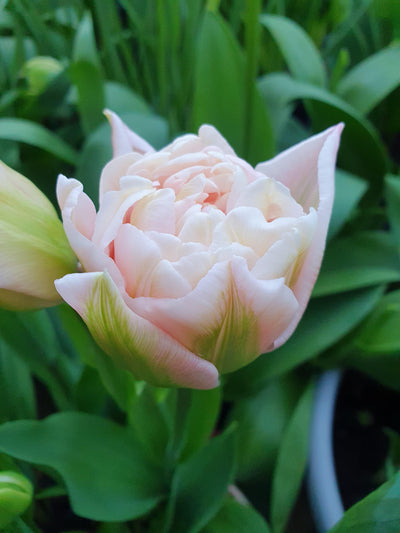The wonders of Clematis
Clematis

There is no climber as diverse, versatile, and beautiful as the clematis. If planting in succession, it is even possible to have clematis flowering in your garden in every month of the year. Like the climbing version of a dahlia, they come in such a myriad of colours, shapes and forms that it is impossible not to find one that will suit your garden. Some scramble up trees and through hedges, others are happy in a container; many like bright sunshine but others are just as happy in the shade; there really is a clematis for everyone! There are purple ones, blue ones, white ones, double flowered species, some beneficial for wildlife, others with ornamental seedheads… but where to begin?
While the vast array of forms and varieties of clematis is brilliant and exciting, it can easily become overwhelming when faced with such a variety of classifications… what’s the difference between group 1 and group 2?... when can I prune my clematis?... how do I know which are evergreen?... are a few of many questions that may be spinning through your head. Once you have the basics, clematis are a simple group of plants to maintain, and as they are perennial and mostly frost hardy they will keep on rewarding you with pops of colour around the garden for many years to come.

The most simple way of understanding the groups of clematis is to work chronologically throughout the year. Group 1 flower first, in late winter and early spring, followed by group 2 in early summer. Group 3 extend the summer, flowering after midsummer and into early autumn. Group 1 tends to include the tall, often scented, open flowered varieties such as ‘Montana’, some of the earliest of these being the evergreens which can flower in February, and even right through a mild winter (a favourite being C. Armandii). Group 2 clematis are the large, blowsy and showy blooms which epitomise June. Often the size of a hand and sometimes bigger, their flowers come in an array of colours and can even exhibit stripes and colour blends. Clematis x durandii has large, bright purple, star-shaped blooms. Finally, Group 3 tend to be more modest in their flowers, however are invaluable in prolonging the season’s interest, with many flowering from August right through to November. C. flammula, C. koreana and C. tangutica are all small in flowers but do so profusely. When and how to prune your clematis depends entirely on the group and flowering time, so ensure you keep a record of the species of your plant and its season for pruning.
Once you have selected the clematis for you (or even one of each group to have clematis the year round…) it is time to get planting! December is a brilliant time to plant clematis and they are an ideal Christmas gift for a gardener. Most are dormant now so when planted they will settle in quickly to perform brilliantly next spring (start hinting now!) Clematis thrive in moist but well-drained soil; they will adapt to sun or partial shade. The roots will grow best if cool, so shade with the foliage of other plants, such as ferns or astrantia, and create a beautiful, layered planting effect. To prevent the fungal disease clematis wilt, plant in deep and fertile soil and avoid letting the roots of the plant dry out.
Clematis, while beautiful, tend to have specific flowering periods, so in order to extend the interest, consider pairing with another climber. For example, trachelospermum jasminoides is a beautiful evergreen which will conceal a fence with ease; bejewelled with scented sprays of white flowers in spring and summer. Another, more fiery option is ipomoea lobata (or Spanish flag), which can be grown as an annual amongst your clematis to provide bursts of colour in late summer and early autumn. Yet the possibilities of climbers to grow amongst your clematis are endless, from the more permanent wisteria and roses to the fleeting but beautiful sweet pea and even a simple, variegated ivy, clematis are arguably the most versatile of climbing plants due to their ability to partner beautifully with other climbers.

Each garden should make room for one clematis (or two… or three… or four…) and with careful planning, but minimal maintenance and maximum impact, you could have flowers all the year round! And not to mention the neighbour’s ugly fence gets covered…





Leave a comment